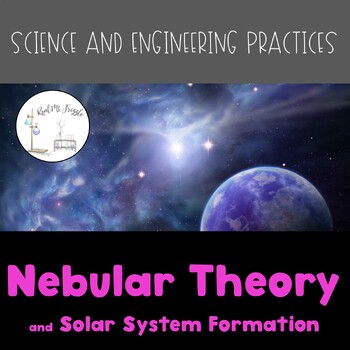Science and Engineering Practices: Nebular Theory and Solar System Formation
- PDF
What educators are saying
Also included in
- Based on the NGSS's Science and Engineering Practices , these products give students the opportunity to perform scientific activities in the classroom!------------------------------------------Each topic includes:✨One activity for each S.E.P. (More than 170-minutes per topic)✨Teacher instructions✨MaPrice $63.00Original Price $70.00Save $7.00
Description
Updated Oct. 2023!
Based on the NGSS's Science and Engineering Practices , this product includes lots of practice with concepts relating to ✨Nebular Theory and Solar System Formation✨!
------------------------------------------
Included in this product:
✨One activity for each S.E.P. (230-minutes total!)
✨Teacher instructions
✨Materials list
✨Answer key
------------------------------------------
Why S.E.P.s?
★Give students multiple ways to demonstrate learning
★Allow students to DO science rather than memorize information
★Differentiate instruction for a variety of learners
------------------------------------------
How to use this product:
⭐Set up all S.E.P. activities, and allow students to travel to stations
⭐Use a single S.E.P. activity as a class starter
⭐Choose an S.E.P. activity for part of your next exam
⭐Share an S.E.P. activity with a Language Arts teacher for cross-curriculuar learning
⭐Choose a few S.E.P. activities for a sub plan
------------------------------------------
Try before you buy! Check out this FREE Science and Engineering Practices Product:
❄️ Science and Engineering Practices: Water Cycle
------------------------------------------
You can also find this product here:
❤️ Science and Engineering Practices GROWING BUNDLE!
------------------------------------------
Other Science and Engineering Practices:
✨ Science and Engineering Practices: Chemical Properties
✨ Science and Engineering Practices: Coriolis Effect
✨ Science and Engineering Practices: Earthquakes
✨ Science and Engineering Practices: Geology
✨ Science and Engineering Practices: Newton's 1st Law of Motion
✨ Science and Engineering Practices: Newton's 2nd Law of Motion
✨ Science and Engineering Practices: Solar Energy
✨ Science and Engineering Practices: Water Cycle
✨ Science and Engineering Practices: Water Properties
✨ Science and Engineering Practices: Waves
------------------------------------------
Related Products
☀️ How the Earth was Made--Asteroids
☀️ Nebular Theory 2-Day Lesson
☀️ Astronomers throughout History
☀️ Stars and the Periodic Table--Doodle Reading
------------------------------------------
This product is best suited for middle-school students. Download the preview to see if it's right for your classes!
Real Ms. Frizzle






